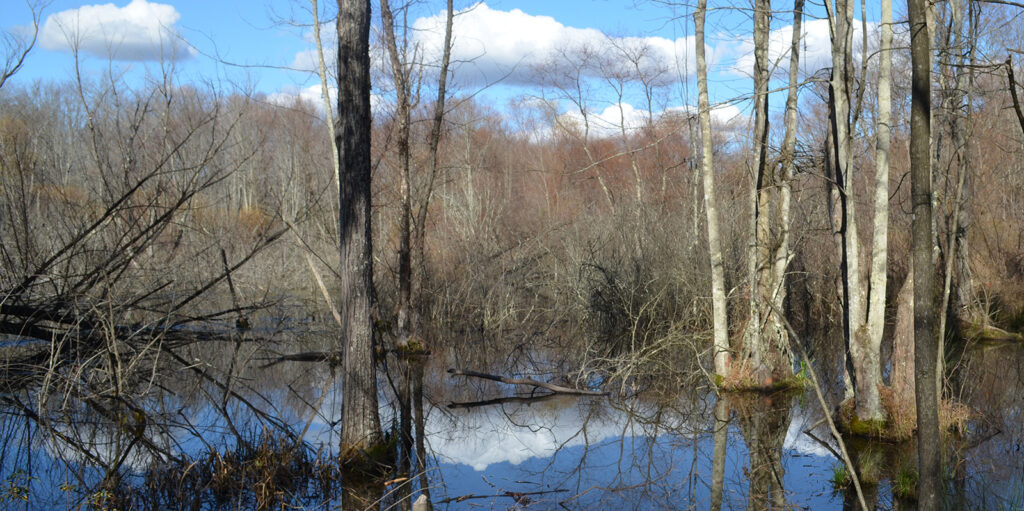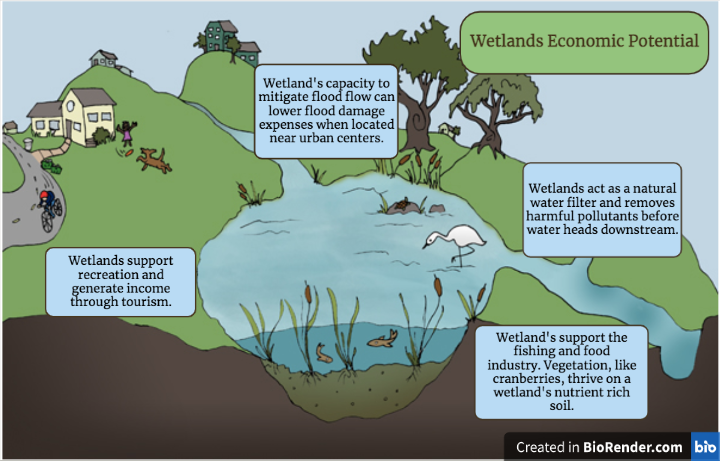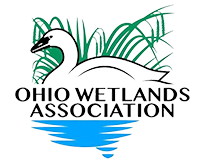
Learn More About The Ohio Wetlands
According to the Ramsar Convention on Wetlands;
“Wetlands are areas of marsh, fen, peatland or water, whether natural or artificial, permanent or temporary, with water that is static or flowing, fresh, brackish or salt, including areas of marine water the depth of which at low tide does not exceed six meters.”

The Benefits Of Wetlands
Shoreline Stabilization
Wetlands that occur along the shoreline of lakes or along the banks of rivers and streams help protect the shoreline soils from the erosive forces of waves and currents. The wetland plants act as a buffer zone by dissipating the water’s energy and providing stability by binding the soils with their extensive root systems.
Wildlife Habitat
Many animals depend on wetlands for homes and resting spots. Fish, amphibians, reptiles, aquatic insects and certain mammals need wetlands as a place for their young to be born and grow. Wetlands provide grounds for many U.S. breeding birds to nest and raise their young. Additionally, migratory waterfowl use wetlands as an integral part of their migration journey. Due to the combination of shallow water, high nutrient levels, and high primary productivity, wetlands are able to provide organisms at the base of the food web which has cascading effects throughout the entirety of the wetland ecosystem.
Flood Control
Wetlands can slow runoff water, minimizing the frequency streams and rivers reach catastrophic flood levels. Wetland vegetation slows the speed of flood waters and can distribute the flow more slowly and evenly across the landscape. This braking activity, combined with a wetlands ability to store immense loads of water lowers flood heights and mitigates surface soil erosion. Wetlands near urban centers provide a natural protection from flood events and can absorb the excess flow from the impervious surfaces within the community. Wetlands near rural communities can aid in the mitigation of field flooding/ water logging.
Drinking Water Quality
Wetlands improve water quality in nearby rivers and streams, and thus have considerable value as filters for future drinking water. Wetlands can also reduce environmental issues like algal blooms or issues associated with excess nutrient runoff.
Rare Species Habitat
43 per cent of threatened or endangered species in the U.S. live in or depend on wetlands. This includes plants and animals.
Recreation
Wetlands are inviting places for recreational activities including hiking, fishing, bird watching, hunting and boating.
Fisheries Habitat
Many species of fish utilize wetland habitats for spawning, food sources, or protection.
Education
Wetlands provide ideal locations for classroom ecological studies and a focus for art.
Erosion Control
Wetland vegetation reduces erosion along lakes and stream banks by reducing forces associated with wave action.

Atmospheric Regulation
Despite only attributing to 9% of the Earth’s terrestrial landscape, wetlands are estimated to store 35% of all terrestrial carbon. A pristine wetland will act as a carbon sink, but damaging or degrading wetlands can conversely result in carbon emissions as the removal of water allows oxygen to reach previously unreachable organic matter which results in an influx of CO2 emissions as the organic matter oxidizes.


Groundwater Discharge and Recharge
Some wetlands serve as a source of ground water recharge. By detaining surface waters that would otherwise quickly flow to distant lakes or rivers, the water can percolate into the ground and help ensure long-term supplies of quality groundwater. Some wetlands are ground-water discharge areas; they receive ground water even during dry periods. This helps reduce the impact of short-term droughts on rivers and streams.Natural filter. By trapping and holding water, wetlands store nutrients and pollutants in the soil, allowing cleaner water to flow into the body of water beyond or below the wetland. Vegetation, like cattails, can absorb some of the pollutants that remain in the soil. Wetlands also moderate water flows, providing time for sediments to settle out before the water is released to other wetlands, lakes, or streams. Less sediment means clearer waters and a better environment for aquatic life.
Source of Income
Wetlands provide economic commodities such as cranberries and fish and provide spatial amenities to developments. Their capacity to mitigate flood flow can save monetary loss from flood events in urban centers.

OTHER BEnEFITS
Ecosystem Services Provided by Wetlands
Provisioning Services
- Fisheries support
- Heat production for fuel and horticulture
- Animal Harvesting
- Timber Production
- Direct Food Production
Supporting Services
- Wetland functions:
- hydric soil development
- serving as chemical sources, sinks and transformers, and water storage
Cultural Services
- Landscape aesthetics
- Sites for relaxation
- Education
- Ecotourism
Regulating Processes
- Water quality improvement
- Flood Mitigation
- Coastline protection
- Carbon sequestration
- Habitat for species
